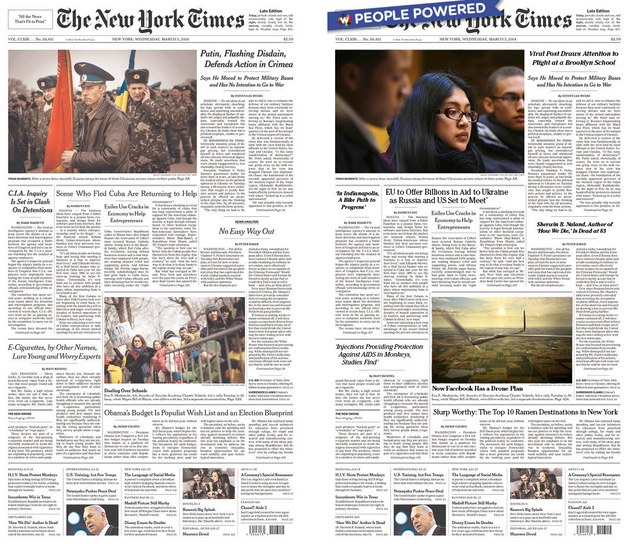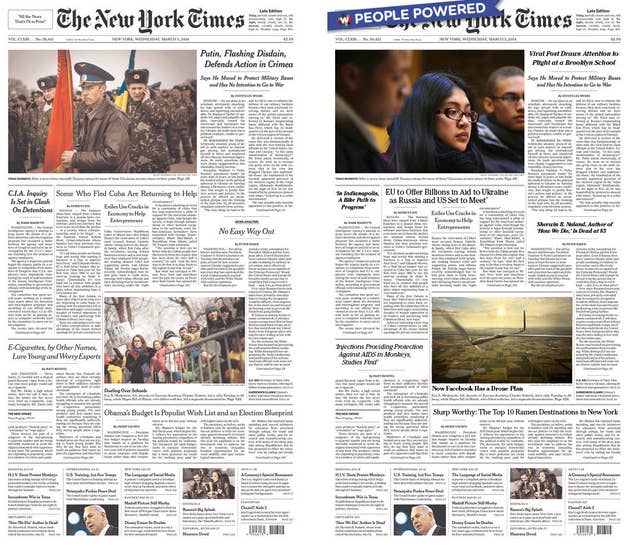
NewsWhip, a company that ranks and monitors news stories through social shares, conducted an interesting experiment yesterday. Using Spike, a tool that monitors social activity to find the "most shared" stories across a particular site, NewsWhip swapped the front page stories of major newspapers with each paper's most shared stories. The results touch on an interesting truth: that the front page isn't so much a comprehensive collection of the most important and popular stories on a given day as it is a reflection of editorial whims and, in the case of a tabloid paper like the Daily Mail, a clear demonstration of the institution's agenda.
Perhaps more important though, is how, in many cases, the re-imagined front pages appear reasonably well rounded and contain plenty of hard news. While culture and lifestyle stories do seem to outrank the choices most front-page editors — the "Top 10 Ramen Destinations in New York" is unlikely to grace the front page of the New York Times — hard news stories (conflict in Ukraine, Obama's 2015 budget) still appear on the "redesigned" front pages, though less prominently. It's also easy to see the internet's influence in the new pages. Stories about social media are more prominent and local news with its limited audience is hard to come by on the internet's version of page one.
Wall Street Journal

Daily Mail

Washington Post

USA Today
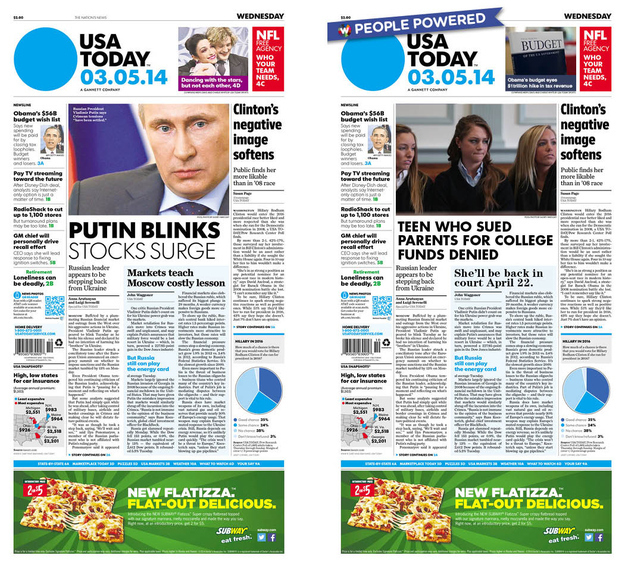
New York Post
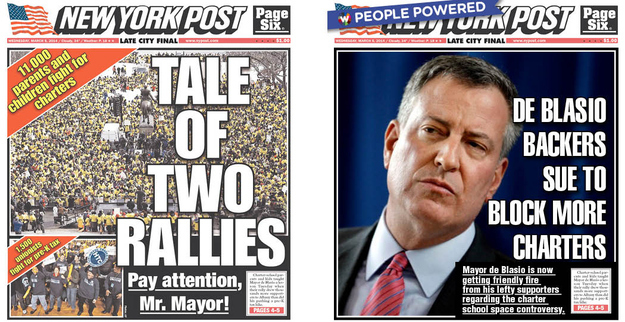
The Guardian
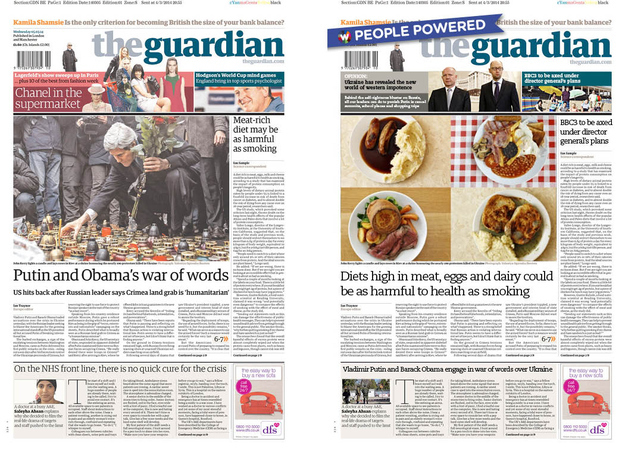
New York Times
